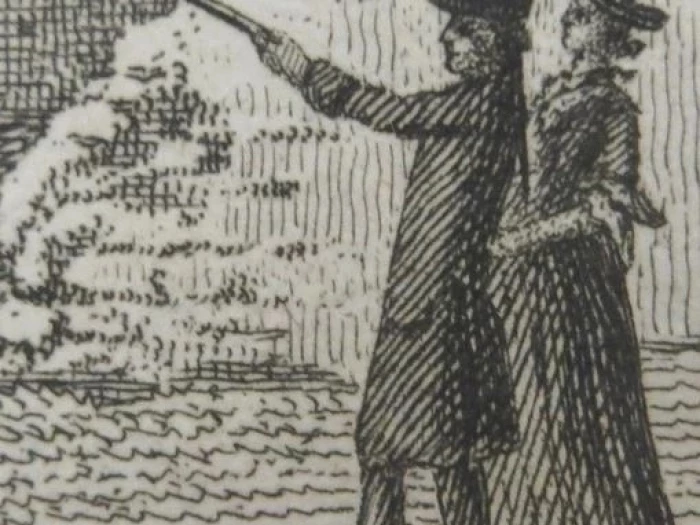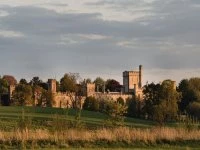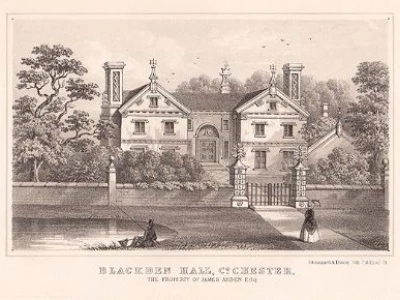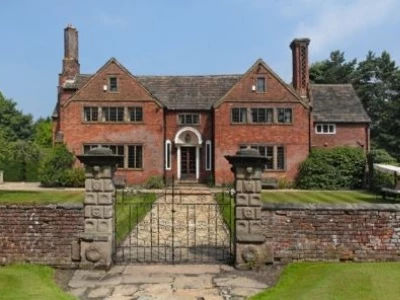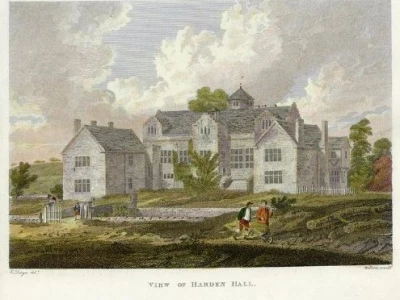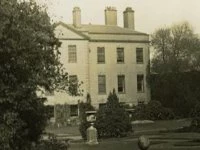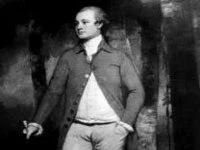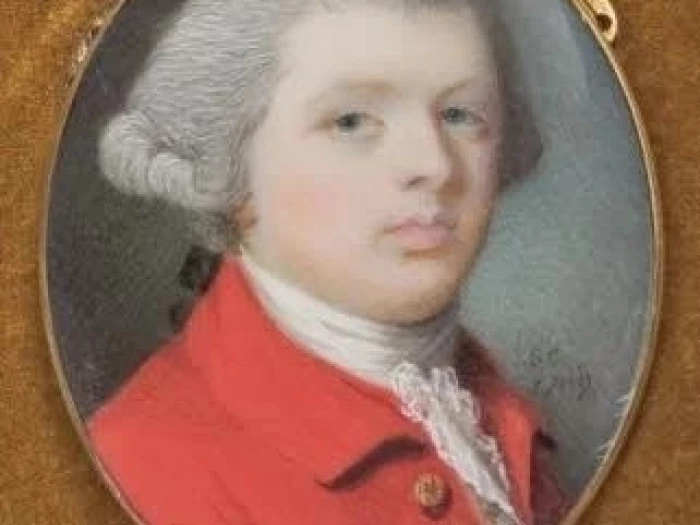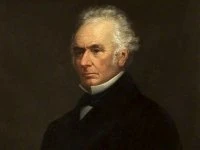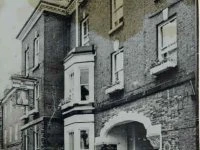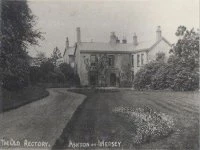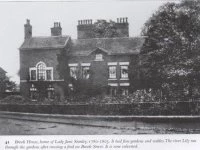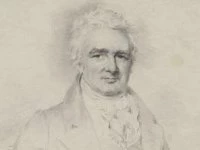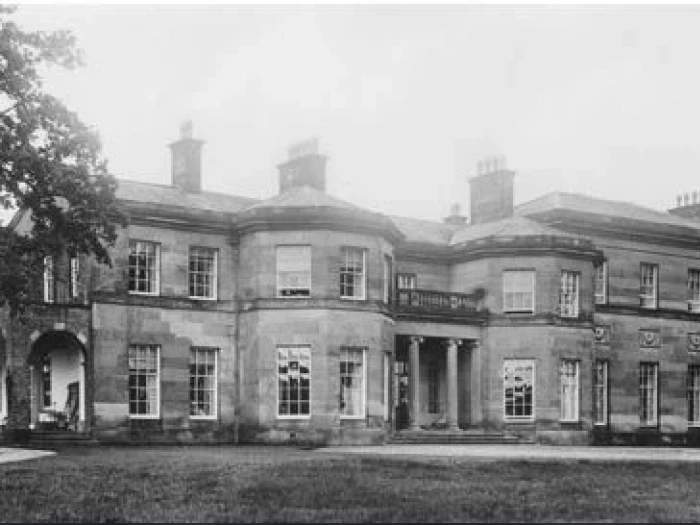Customers
Caldwell's supplied plants to many customers in Cheshire, Lancashire, the surrounding counties, London and even as far away as the West Indies. You can search in the Customer listing under Plants/Caldwell Ledgers/Customer Reports for the plants they purchased.
Here we provide some information about some of them – if you can add to this, why not contact us. Click on a name, below to find out more, and click on an image to enlarge it.
The Ackers brothers were born into a manufacturing family – Holland in 1744 and James in 1752. They were very prominent in Manchester society, serving as Constable (Holland) and Borough Reeve (James) and supporting local charities and movements to improve the town. Holland was a member of the Silk Committee of the Committee for the Protection and Encouragement of Trade in Manchester and its Neighbourhood (1783). From other causes they subscribed to we can tell they were Anglican and very conservative in their views.
Holland married in 1787, fairly late in life; he was in his forties when his son George Holland was born on 19 August 1788. When he died, aged 56, in 1801, George was only 12.
The brothers were financially very successful, eventually leaving Manchester, having purchased estates in Cheshire and George Holland grew up to inherit Great Moreton Hall.
Between November 1794 and March 1795, Holland Ackers purchased three lots of trees from Caldwell, at a combined cost of £10 8s 2d. The ledgers don't tell us what type of trees these were, but we do know that in August 1795, Holland Ackers was awarded a Silver Medal at the Agricultural Show for 'planting 3,000 Ash Trees' between 1 May 1794 and 1 May 1795. At that show, Holland Ackers, along with Davies Davenport of Capesthorne, another Caldwell client, was elected a subscribing member to the Agricultural Society.
Like his father, George Holland Ackers was a Caldwell customer. His purchases can be seen in Ledger 10 reports.
John Addenbrooke of Stourbridge (1759-1837) was born John Addenbrooke Homfray, his mother's maiden name being used as a middle name.
The surname Addenbrooke was an old and distinguished one. An ancestor had founded the Cambridge hospital which still bears his name. When John's kinsman, Edward Addenbrooke, died, the name would have died out, but permission was given for John to take the surname and he became known as John Addenbrooke Addenbrooke.
The family were ironmasters in the West Midlands area. John inherited Wollaston Hall, Stourbridge, from his mother's family and The Lea, Upper Sapey, Herefordshire, from his uncle. Wollaston Hall was a timbered building and was demolished in 1925-6 and the pieces supposedly transported to America.
John served as Sheriff of Worcestershire in 1798 and in 1830 he was a magistrate. He died on 10 March 1837.
For more information see http://landedfamilies.blogspot.co.uk/2013/05/39-addenbrooke-of-lea.html
James Arden was born in Market Drayton where his father was a surgeon. He followed the same profession and lived in Knutsford, although by the 1851 census he was no longer practising as a surgeon. In 1816 he married Mary, the daughter of Thomas Kinsey, and so became the owner of the Kinsey family home, Blackden Hall (now Blackden Manor) at Goostrey – about six miles south of Knutsford, although his address in the ledgers seems to have always been given as Knutsford.
For further information:
http://www.cheshirelife.co.uk/blackden_manor_goostrey_1_3589575
and
http://www.geni.com/projects/Blackden-Hall-Toad-Hall-Blackden-Cheshire-England/26763
John Ardern's family owned extensive lands in Cheshire from Frodsham in the west to Stockport in the east. Properties ended up in the ownership of the Arderns through various marriages. John's father (also John) had married Sarah Pepper from Yorkshire and her family house Pepper Hall (now Pepper Ardern Hall) was added to the others. The main family home – Harden Hall in Bredbury – was owned by John Arden, but it is his address in Ashley, a couple of miles from Knutsford, that appears in the ledgers.
In 1795 John Aikin described Harden Hall as "no more than a farmhouse". It was moated and, although kept in good condition it was 200 years old and the inside was old fashioned and the windows let in little light.
In 1783 the contents of Ashley House were put up for auction, so it is likely that Ardern moved in shortly after that. Ardern seems to have been a very private person and has left few records. His younger brother Richard Pepper Ardern entered the legal profession and shared offices with William Pitt. When Pitt became Prime Minister, he appointed Richard as Master of the Rolls. In 1801 he was created Baron Alvanley, taking the name from his brother's estates in west Cheshire. Alvanley's son was a friend of Beau Brummell.
Meanwhile, John Ardern lived quietly in Cheshire and died unmarried at his mother's childhood home Pepper Hall, near Northallerton, Yorkshire.
For more information about John Ardern see the following link
Henry Hervey Aston Esq. (1759-1798) was a landed gentleman and soldier who owned properties in several counties. Colonel Aston commanded 12th (East Suffolk) Regiment of Foot in India from 1796 to 1798 where he died after being shot in a duel. He was a keen cricketer, appearing for Middlesex and Hampshire and once for England in 1792. He was also Master of the Tarporley Hunt in Cheshire.
Following his marriage to Harriet, the Astons made alterations to the Aston Hall and work was carried out on the garden. Plants were purchased from Caldwells for Aston Hall, near Frodsham in Cheshire.
Aston Hall was demolished in 1938 and members of Cheshire Gardens Trust are researching the gardens which are understood to have been remodelled by the Astons following a visit by Humphry Repton, who produced a Red Book for Aston.
Not to be confused with Clough Hall, the home of Thomas Kinnersley (also a Caldwell customer), the home of the Rev. Basnett was known as The Cloughs, or sometimes as Clough House. It was about a mile from Newcastle under Lyme.
In 1834 it was described as "a handsome mansion and large estate ... pleasantly situated 1 ½ miles W. of Newcastle, near the Keele road."
The Rev Basnett died on 27 March 1844 at the age of 81.
Richard Brooke purchased the Norton Priory estate in 1545 following the dissolution of the monasteries by Henry VIII in 1536. He developed the Tudor house from the Priory buildings and succeeding generations of the Brooke family continued to develop the house and the estate over of the following 400 years.
With increasing agricultural wealth in the 18th century the family commissioned the Georgian mansion. They undertook major landscape works to improve the setting for the property and screen the Bridgewater canal which crossed the estate rather too close to the newly constructed house in the late 1770s.
A large walled garden was also created some distance from the house in the mid 1770s. This would have required stocking with a significant number of appropriate fruit and vegetable plants. Trees and shrubs would have been acquired to develop the 19th century gardens and woodland to the south of the house.
In the late 19th and early 20th century chemical pollution from the local industries of Runcorn and Widnes caused significant damage to the trees of the estate and encouraged the family to seek a less polluted environment. They moved to their property in Worcestershire around 1920 and the Norton mansion was demolished in 1928. The land was initially leased as a shooting estate and was ultimately sold in 1968 to Runcorn New Town Development Corporation for housing.
The 12th Earl of Derby, Edward Smith Stanley (1752-1834) was the son of James Smith-Stanley, Lord Strange, and grandson of Edward Stanley, 11th Earl of Derby. His mother was Lucy, daughter and co-heir of Hugh Smith of Weald Hall, Essex. His father had assumed the additional surname of Smith by Act of Parliament in 1747. Smith-Stanley entered Eton College in 1764, proceeding to Trinity College, Cambridge in 1771.
Edward was a colourful character who inherited the earldom at the age of 23. He had political ambitions and had houses in London and Surrey but he particularly enjoyed horse-racing and owned a stud farm at Newmarket. He established the racing festivals 'The Derby' and 'The Oaks' (originally spelled Oakes). He married twice and made Knowsley Hall his main family residence. From 1790 the 12th Earl of Derby was placing orders for trees, shrubs, flowers, fruit and vegetables for Knowsley Hall on Merseyside. The gardens and parkland were created by Lancelot 'Capability' Brown around 1775.
Knowsley Hall today is used for corporate events but part of the estate has become the Knowsley Safari Park following the establishment of a zoological collection by the 13th Earl of Derby.
William Egerton (1749-1806) lived at Tatton Park, Cheshire. The estate was owned by the Egerton family from the end of the seventeenth century until the last Lord Egerton died without issue in 1958 when it was left to the National Trust and is now financed and maintained by Cheshire East Council.
In 1795 the estate covered 251,000 acres and the ledgers show that William Egerton was a major customer from 1784 onwards, buying trees, vegetables and herbs, fruit trees and roses. Bulbs were fashionable at the time and in 1794 he purchased 38 Double Dutch Hyacinths for £25 18s 8d and 12 Double Yellow Tulips for £11 14s 2d.
William Egerton was born William Tatton, but changed his name to Egerton when his maternal uncle, Samuel Egerton, died in 1780 and he inherited the Tatton estate. He was High Sheriff of Cheshire in 1778 and Captain of the Cheshire Militia in 1797. He was a politician as an MP for Hindon and Newcastle under Lyme between 1784 and 1802, becoming MP for Cheshire from 1802 until his death from 'rapid dropsy' in 1806.
William built a new large country house at Tatton which was completed by his son Wilbraham Egerton (1781-1856) on his succession to the estate. Much of the parkland at Tatton was inspired by the ideas of Humphry Repton. The gardens have developed and altered over the years as owners and fashions changed but throughout the 200 year period of the Caldwell Nursery business, plants were supplied to the estate. In the Tatton gardens there is a beautiful Acer named 'William Caldwell'.
Samuel Greg, born in Ireland in 1758, was the son of Thomas Greg, a successful merchant and his wife, Elizabeth Hyde. Samuel was one of nine surviving children, he had four more siblings who died. At a young age he was adopted by his uncle, Robert Hyde, who was involved in the Belfast linen trade. Hyde had no children of his own. He sent Samuel to England to study at Harrow School.
After Robert Hyde's death in 1782, Greg took over his uncle's enterprise. Seeing opportunities for manufacturing opened up by the Industrial Revolution, in 1784 Greg founded Quarry Bank Mill, a cotton spinning mill in Styal on the banks of the River Bollin in Cheshire. Greg was quick to adopt innovations in the rapidly developing technologies of manufacturing and a partnership with Peter Ewart enabled him to exploit developments in water wheel and steam power.
Greg planted trees to help with humidity for the cotton. In 1789 he had married Hannah Lightbody, who was a well-educated and romantic lady with a love of nature and the countryside. She wrote in her diary 'the romantic beauty of Quarry Bank delighted me'. Hannah, made a picturesque garden by the side of the river. An upper walled garden was added to grow fruit and vegetables while another garden was created at the Apprentice House. There are a number of records of plants purchased from Caldwells by Samuel Greg and subsequently by his son, Robert Hyde Greg.
Today the industrial heritage site of Quarry Bank is owned by the National Trust and the gardens have been undergoing a programme of restoration.
Mrs. Jane Hancock became Innkeeper of The George coaching inn at Knutsford following the death of her husband in 1789. She ordered vegetables and flower seeds from Caldwells which may have been grown on land adjacent to the inn or on other local land she owned.
Originally called The George and Dragon, the inn became The Royal George after a visit by Queen Victoria in 1832. The inn had been built by subscriptions from the gentry for their exclusive use and was kept busy at all hours by the mail coaches going to London, Liverpool and Birmingham. The inn housed assembly rooms and tea rooms with a 'wig room' to the rear.
There seems little doubt that Mr. Hostage was a solicitor, but there is some confusion as to whether he was Thomas Joseph Brayne Hostage or Thomas Ives Brayne Hostage as both names occur in the records as being solicitors in Northwich. Possibly they were cousins or father and son.
Thomas J. B. Hostage was Clerk to the Trustees of the Weaver Navigation. He was married in 1816 at a double wedding; his bride was Mary and her elder sister Eliza was married to A. H. Blake, esq. of Newfield. They were the third and fourth daughters of Enoch Wood of Burslem. Enoch Wood was one of the most important potter/sculptors of the time and images of his work can be found on the internet.
Revd Richard Popplewell Johnson (1749-1835) became the rector at Ashton upon Mersey, Cheshire in 1774. Caldwell orders from 1790 onwards show that Revd. Johnson ordered a wide range of plants including vegetables, flowers and fruit trees and also larger trees such as beech, horse chestnut, sycamore and lime. Pictures taken in the 1880s show that the 'Old Rectory' at St. Martin's Church in Ashton on Mersey had substantial gardens.
Richard Johnson was born in Wakefield, Yorkshire, and gained a B.A. at Cambridge in 1772 before being ordained in Norwich (as a Deacon) and then Chester (as a Priest). His father was an attorney and his mother an heiress and he married Penelope Stafford who inherited money from her father, a leading townsman of Macclesfield. Revd. Johnson spent 61 years at Ashton until his death in 1835.
Lady Jane Stanley (1727-1810) was the daughter of the 11th Earl of Derby and never married. Living very near Caldwell's at Brooke House in Knutsford, Lady Jane Stanley placed orders for vegetables, flowers and fruit, including 'cantelupe' melons, from 1789 onwards.
She funded the planting of trees near the Heath in Knutsford and paid for pavements to be installed in the town. (These were narrow for people to walk in single file so there would be no contact between men and women.) She also presented a sedan chair to be used for the annual May Day parade.
The Stanley family settled in Cheshire in the fifteenth century and had a large estate at Alderley, a village eight miles east of Knutsford.
Sir J T Stanley became the 7th baronet on the death of his father in 1807 and became the first Lord Stanley in 1839. As a young man he led a scientific expedition to Iceland and was the author of several books and papers. He was a member of the Royal Society and a Fellow of the Society of Antiquaries. In 1796 he married Maria Josepha Holroyd the daughter of Lord Sheffield in Sussex.
Much of the estate was originally bare heath but beech trees were planted alongside Radnor Mere in 1640 and fir trees by 1800 on the high ridge of land known as Alderley Edge.
When the Jacobean Alderley Hall burnt down in 1779, the family moved to Park House which had been occupied by the Estate Steward who had taken a great pride in the gardens there. This house was enlarged into a mansion in 1818 and this is where Lord Stanley was living when he ordered trees (such as oak, larch and fir), vegetables, herbs and flowers in 1833 and 1834 from the Nursery. Lord Stanley was said to be a gentle, kind person and, following his death at the age of 84, he was buried at Alderley Church with a monument placed in the chancel. There have been successive Lord Stanleys with the family remaining in the area and St. Mary's Church at Nether Alderley is of particular interest.
In 1957, 400 acres of the original estate became a science park with research laboratories but 90% of this area has been maintained as rolling parkland, woodland, lakes and a working farm with permanent pasture. Original estate buildings have been restored, as has the watermill owned by the National Trust.

